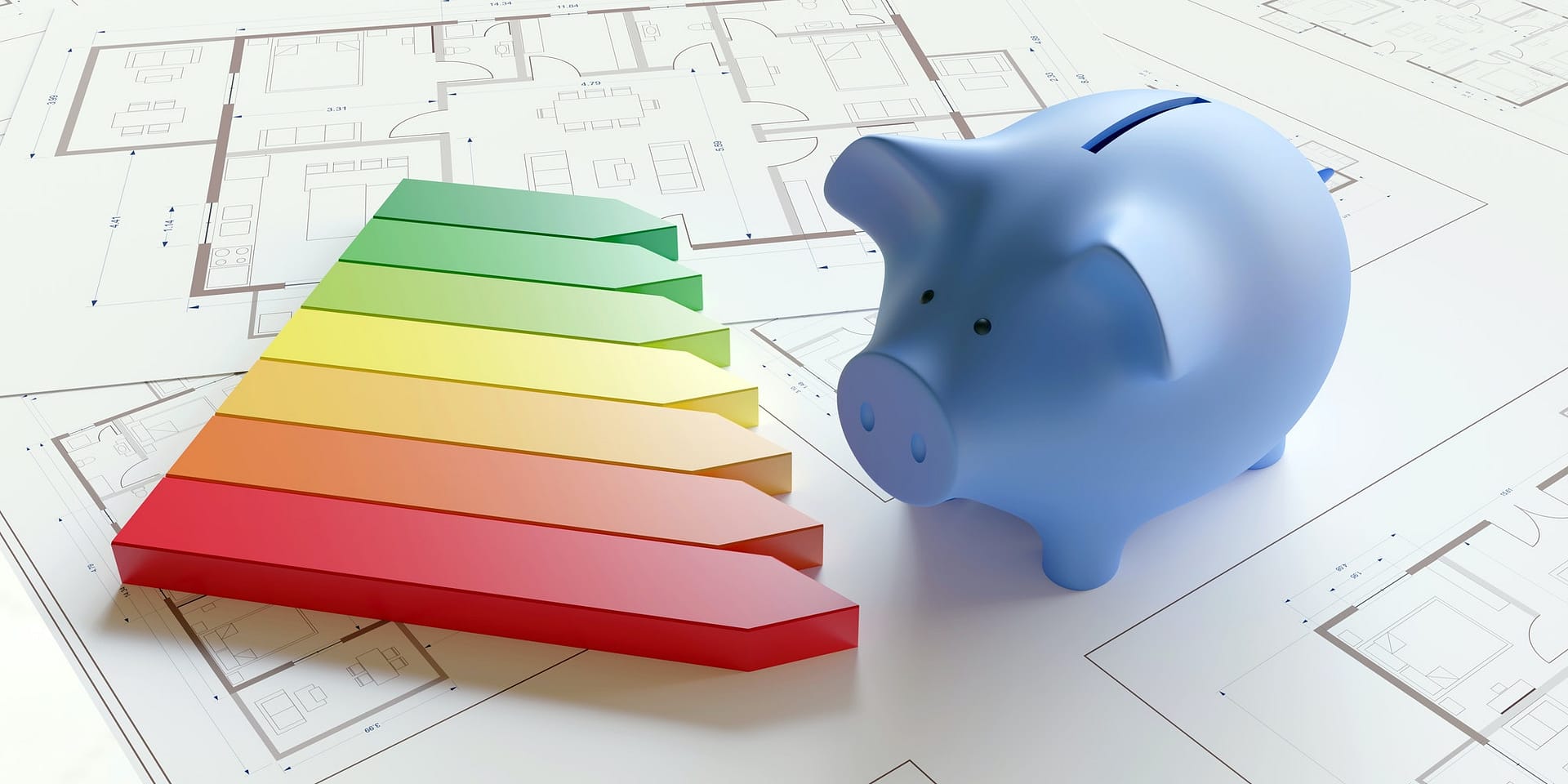Dallas Energy-Saving Tips for Homeowners
Howdy, Dallas homeowners!
Looking to lower your energy bills and have more cash in your pocket? Your home can operate more efficiently with simple adjustments. From optimizing your thermostat to switching to energy-saving lightbulbs, there are plenty of ways to save energy without sacrificing comfort.
If you're ready to take charge and reduce those utility costs, here are some energy-saving tips to make you a savvy homeowner in no time.
Key Takeaways
How's it going, Dallas homeowners!
If you want to spend less on energy and keep more money in your pocket, there are simple changes you can make to your home to use energy more efficiently. From adjusting your thermostat to using energy-saving lightbulbs, there are many ways to save energy without sacrificing comfort.
Ready to take control and cut those utility costs? Here are some energy-saving tips to help you become a savvy homeowner in no time.
AC Maintenance for Efficiency
To improve your AC system's efficiency and cut energy costs, it's important to schedule annual maintenance. This regular upkeep not only keeps your system running well but also reduces your energy bill. When your air conditioner is well-maintained, it uses less energy compared to a poorly maintained unit, leading to lower energy costs.
Additionally, regular maintenance helps prevent unexpected breakdowns, saving you from expensive repairs and ensuring your system lasts longer.
Next, we'll explore optimizing your thermostat for maximum efficiency to further save on energy costs.
Thermostat Optimization for Savings
To save energy and reduce costs, it's important to optimize your thermostat. One way to do this is by using a programmable thermostat to automatically adjust the temperature. For example, you can program it to decrease by 7-10 degrees when you're not home or when you're asleep.
When you're at home, set the thermostat to the highest temperature that's still comfortable for you. This helps to optimize energy usage.
Additionally, minimizing the temperature difference between the indoors and outdoors can help lower cooling costs. It's also essential to regularly maintain your HVAC system to ensure it runs efficiently.
By following these thermostat optimization strategies, you can contribute to energy conservation and lower your utility bills.
Next, let's explore effective home cooling strategies to further improve your energy-saving efforts.
Effective Home Cooling Strategies
To effectively cool your home in Dallas while maximizing energy efficiency, you can start by optimizing your air conditioning. Make sure to clean or replace filters regularly to ensure efficient operation. Upgrading to ENERGY STAR-certified units can lead to significant energy savings.
Additionally, using ceiling fans in conjunction with your air conditioning can help circulate cool air more effectively. Keeping blinds drawn during the hottest parts of the day is important to prevent sunlight from heating up your home. You can also utilize natural shade from trees or consider installing window films to reduce heat gain.
These energy-saving cooling strategies will help you maintain a comfortable home environment while reducing your energy consumption.
If you're looking to take your energy efficiency to the next level, consider the benefits of smart thermostat installation to further optimize your energy usage and savings.
Smart Thermostat Installation Benefits
Installing a smart thermostat gives you the chance to make the most of your energy usage and boost your energy efficiency. When you upgrade to a smart thermostat, you can enjoy several benefits, such as:
- Energy Savings: Smart thermostats adjust the temperature based on your habits, helping you save money on your utility bill.
- Remote Control: Easily adjust temperature settings from anywhere using your smartphone.
- Prevent Unnecessary Cooling: Smart thermostats stop unnecessary cooling when you're away from home, which helps save energy.
- Customized Settings: Tailor heating and cooling schedules to fit your lifestyle, giving you freedom and comfort.
- Reduced Energy Costs: Upgrading to a smart thermostat can aid in reducing energy costs, leading to long-term savings. This technology allows you to take control of your energy usage and create a more efficient home.
Now, let's delve into some sealing and insulation tips to further improve your energy efficiency.
Sealing and Insulation Tips
Improving your home's energy efficiency is essential. One way to do this is by sealing air leaks and adding insulation.
A good place to start is by insulating your attic with a minimum of R-30. This can help reduce your heating and cooling needs by up to 30 percent.
It's also important to check for signs of inefficient ducts and seal any air leaks with caulking or weather stripping.
Don't forget to pay attention to windows and doors, as even a small quarter-inch gap can let in a significant amount of air.
Additionally, installing foam gaskets behind outlets and switch plates on exterior walls can help prevent air leakage.
Energy-Efficient Lighting Solutions
When it comes to energy-efficient lighting, it's important to weigh the advantages of LED bulbs versus CFL bulbs and consider the option of installing dimmer switches.
LED bulbs have a longer lifespan and use less energy compared to CFL bulbs.
Additionally, dimmer switches provide the flexibility to adjust lighting levels according to your needs, ultimately helping you save energy and reduce costs on your energy bill.
These simple changes can lead to significant savings on your energy bill and contribute to a reduced environmental impact.
LED Vs CFL
When it comes to choosing lighting for your home, it's important to understand the differences between LED and CFL bulbs in terms of energy efficiency and lifespan.
LED bulbs use only 20–25% of the energy that traditional incandescent bulbs use. On the other hand, CFL bulbs are more energy-efficient than incandescent bulbs but have a shorter lifespan compared to LEDs. Specifically, ENERGY STAR® qualified LEDs are highly energy-efficient, using less power and lasting much longer than traditional incandescent bulbs.
In fact, LEDs can reduce your energy bills by up to 90% when compared to incandescent bulbs. Overall, LED bulbs have a longer lifespan and are a cost-effective choice for homeowners when comparing LED vs CFL lighting options. Making the switch to LEDs can lead to substantial energy savings and reduced maintenance, making them a smart choice for energy-efficient lighting.
Next, let's explore the benefits of installing dimmer switches.
Installing Dimmer Switches
To improve your home's energy efficiency, consider installing dimmer switches to control your lighting. Dimmer switches allow you to adjust the brightness of your lights, which can reduce energy consumption and extend the lifespan of your bulbs. When used with energy-efficient LED bulbs instead of incandescent bulbs, dimmer switches can maximize your energy savings.
They also provide the flexibility to create the desired ambiance in different rooms. Additionally, pairing dimmer switches with setting your thermostat back when not at home can optimize your energy usage. These simple adjustments can significantly improve your home's energy efficiency, leading to long-term cost savings and a reduced environmental impact.
Now, let's explore some tips for maximizing appliance efficiency.
Appliance Efficiency Tips
When it comes to making your home more energy-efficient, one effective step is to upgrade old appliances with newer, more efficient models. Here are some tips for improving appliance efficiency:
- Water Heater: Insulate your water heater and set the temperature to 120°F for optimal energy use.
- Air Filters: Keep furnaces and air conditioners efficient by regularly cleaning and replacing air filters.
- Renewable Energy: Consider using solar panels or other renewable energy sources to power your appliances.
- Routine Maintenance: Schedule regular maintenance for your appliances to ensure they operate at their best.
- Energy Star: When buying new appliances, look for the Energy Star label to ensure high energy efficiency standards are met.
By following these tips, you can reduce your energy consumption and contribute to a more sustainable future.
Next, we'll explore how landscaping can further enhance energy savings in your home.
Landscaping for Energy Savings
Landscaping plays a crucial role in saving energy.
Strategically planting shade trees around your home can naturally cool the interior during hot Dallas summers, reducing the need for excessive air conditioning.
Opt for environmentally friendly landscaping options that provide shade and require minimal water consumption. This benefits both your energy usage and the environment.
Native foliage and drought-resistant plants can help you create a beautiful, energy-efficient landscape that complements your home. By selecting the right plants and trees, you can minimize water usage and create natural shade.
This contributes to lower energy bills and a more comfortable living space. These landscaping strategies empower Dallas homeowners to reduce their environmental impact while enjoying the freedom of a naturally cooler home.
Let's now explore behavior modification for energy reduction.
Behavior Modification for Energy Reduction
Lowering your thermostat by 7-10 degrees for 8 hours can save you up to 10% on heating and cooling bills. Setting it as high as comfortably possible when you're at home will also reduce energy costs.
Using ceiling fans to raise the thermostat setting by 4 degrees without sacrificing comfort is another simple change that can make a big difference.
Conserving water and electricity by turning off the faucet when brushing your teeth and limiting shower time can also contribute to energy reduction.
Making these adjustments not only helps you save money but also reduces your environmental impact.
Thermostat Adjustments for Efficiency
Adjusting your thermostat settings and adopting energy-saving habits can help reduce energy consumption and save money on your bills. These simple changes not only benefit your wallet but also contribute to a more efficient heating system. Here are some thermostat adjustments for efficiency:
- Lower the thermostat by 7-10 degrees for 8 hours to save up to 10% on your heating and cooling bills. This can be done while you're asleep or away from home.
- Set the thermostat as high as comfortably possible when at home to reduce energy costs.
- Minimize the temperature difference between indoors and outdoors to lower cooling costs.
- When away, set the thermostat to a higher temperature or switch it off to save energy.
- Consider installing a smart thermostat to automatically adjust the temperature based on your habits and further save money.
Making these adjustments can lead to significant energy savings and a more efficient heating and cooling system.
Unplugging Idle Electronics
When you're not using them, consider unplugging idle electronics. This simple habit can help reduce energy consumption and lower your electricity bills.
In the cold winter, it's important to keep your home comfortable without wasting energy. By unplugging idle electronics like chargers, TVs, and kitchen appliances, you can contribute to energy conservation.
This small change can lead to significant impacts on energy preservation and cost reduction. Taking control of your energy usage in this way not only benefits your wallet but also makes a positive impact on the environment.
It's a mindful and practical way to use resources sustainably for future generations.
Limiting Water Heater Temperature
Lowering your water heater temperature to 120°F is a simple way to save energy and reduce costs. Here are some tips to help you achieve this and limit energy consumption:
- Lowering the temperature by 10°F can save 3-5% on energy costs. This not only reduces your expenses but also helps in conserving energy.
- Setting the water heater to 120°F can prevent scalding and reduce mineral buildup, ensuring safety and efficiency.
- Lowering the temperature also reduces the risk of running out of hot water, providing consistent access when needed.
- Installing a water heater blanket can help retain heat and save energy, further contributing to energy efficiency.
- Consider installing energy-efficient appliances, such as a heat pump water heater, to further reduce energy usage and increase efficiency.
Frequently Asked Questions
How Can I Lower My Electric Bill in Texas?
If you live in Texas, there are a few simple ways to reduce your electric bill. Invest in energy-efficient appliances and use smart thermostats to manage your energy usage. Consider looking into solar panels and getting energy audits to find out where you can make changes. These steps can help you save money and lower your energy consumption.
What Is a Low Cost Way to Make Your Home More Energy Efficient?
Looking to improve your home's energy efficiency on a budget? Consider upgrading insulation, investing in energy-efficient appliances, installing a smart thermostat, and using weather stripping techniques. These affordable upgrades can help you save money in the long term. For example, replacing old appliances with energy-efficient models can significantly reduce your electricity bill. Similarly, adding insulation to your attic or walls can help maintain a comfortable temperature in your home without overworking your heating or cooling system. By making these simple changes, you can enhance your home's energy efficiency without spending a fortune.
How Can I Reduce My Home Power Consumption?
To reduce your home power consumption, consider using smart appliances, improving insulation, scheduling energy audits, and installing programmable thermostats. These steps not only help you save energy and cut costs but also enhance the overall comfort of your home. For example, upgrading to energy-efficient appliances such as LED light bulbs can significantly reduce electricity usage and expenses. Additionally, proper insulation in your home can help regulate temperature, reducing the need for excessive heating or cooling. By implementing these changes, you can make a positive impact on both your energy usage and your budget.
How Can I Lower My Electric Bill in the Winter?
During the winter, you can reduce your electric bill by making simple changes. Consider upgrading insulation, adjusting thermostat settings, investing in energy-efficient appliances, and using weather stripping techniques. These adjustments not only save you money but also keep you comfortable. For example, sealing air leaks and adding insulation can help retain heat in your home, reducing the need for constant heating and lowering your electricity usage. Similarly, investing in energy-efficient appliances can lead to long-term savings on your electric bill while also reducing your environmental impact. By making these changes, you can stay warm and cozy without breaking the bank.







